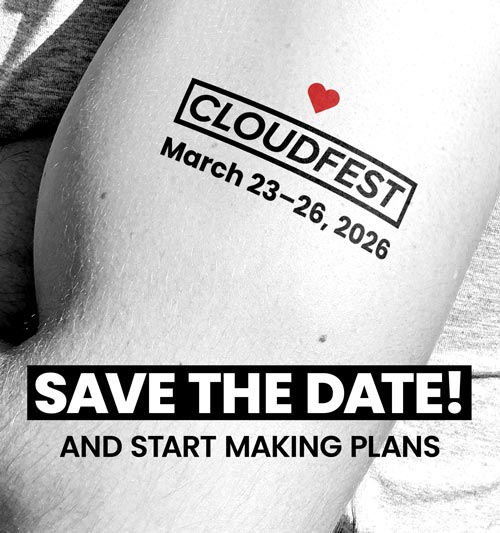- Supporting neurodivergent staff improves performance, retention, and innovation.
- Many organizations still use systems that exclude rather than support.
- Actions for tech leaders:
- Rethink hiring
- Support flexible work
- Respect communication differences
- Improve onboarding and training
- Build psychological safety
Inclusion isn’t just a buzzword—it’s a business imperative. For IT leaders, embracing neurodiversity unlocks talent, boosts productivity, and drives innovation. Here’s how to actually do it.
CSPs and others across the internet infrastructure ecosystem are under pressure to boost service levels and efficiencies. But one of the biggest performance drivers is still being overlooked: neurodivergent talent. Not convinced? Academic research found that 78% of neurodivergent employees said their performance improved due to inclusive policies.
What is neurodivergence, and what does it mean in the workplace?
Neurodivergence simply means having a different neurocognitive experience (how information is processed by the brain) that is different to what is considered typical. It can encompass conditions like autism, ADHD, dyslexia, dyspraxia, among others, and affects at least 15-20% of the global population, according to the British Medical Bulletin.
Yet despite the clear presence of neurodivergent employees across tech teams, leadership structures, and support desks, workplace practices haven’t caught up to help one in five of their employees to perform at their best.
For businesses juggling high client demands and rapid tech evolution, the ability to unlock a broader spectrum of thinking styles isn’t just ethical—it’s strategic.
So, what does genuine support for neurodiversity in the workplace and neurodivergent staff look like? Not empty statements, but systems, culture, and tools that actually work. Here are five ways to get started:
Rethink the hiring process
Traditional recruitment often filters out neurodivergent candidates before they even get in the door.
Job descriptions full of vague “soft skills” requirements (“excellent communicator,” “team player”) or long-winded expectations can deter applicants who process information differently. Meanwhile, interviews that favor quick verbal recall or social fluency can unfairly disadvantage candidates who think deeply but communicate differently.
The solution:
- Simplify job ads. Use clear, direct language and outline essential vs. nice-to-have skills.
- Offer alternative application formats. Let candidates submit video answers, skills assessments, or portfolio-based submissions.
- Adjust interview techniques. Provide questions in advance, allow written responses, and evaluate based on skills, not charisma.
Flexible working can be critical
Flexible work is a post-pandemic staple—but for neurodivergent employees, it’s often non-negotiable.
For those sensitive to sensory input, a crowded open-plan office or constant Zoom calls can lead to burnout. Meanwhile, employees with ADHD might thrive in bursts of hyperfocus at unusual hours—something a rigid 9-to-5 schedule stifles. Ask yourself, are you a Cloud services company, or a timesheet company?
What leaders can do:
- Let outcomes, not hours, define success.
- Support asynchronous collaboration where possible.
- Offer noise-cancelling tools, quiet zones, and optional camera-on policies for remote meetings.
- Let people choose how they work best—without requiring a diagnosis to “qualify.”
Normalize neurodivergent communication styles
Communication differences aren’t deficits—but in fast-paced environments, misunderstandings can arise when people interpret tone, feedback, or interaction styles differently.
A team member with autism might communicate in a more direct or literal way. Someone with ADHD may interrupt out of enthusiasm, not disrespect. If your company culture defaults to a narrow band of expression, you risk misjudging talent.
How to lead better:
- Train managers to recognize different communication styles.
- Encourage feedback from all levels about what works (and what doesn’t) in meetings and documentation.
- Use clear, explicit language when assigning tasks or giving feedback—vague directions are bad for everyone.
Organizations that provide mentors to professionals with a disability reported a 16% increase in profitability. (Deloitte Insights)
Make onboarding and learning neuro-inclusive
Too often, onboarding is a firehose of information with no structure—especially in CSPs and SaaS providers where innovation is constant.
Neurodivergent team members may need more visual aids, repeatable documentation, or time to process new material. That’s not a disadvantage—it’s an opportunity to upgrade your onboarding for everyone.
Key actions:
- Use video walkthroughs, infographics, and interactive documentation.
- Allow self-paced learning options for technical training.
- Check understanding through practical tasks instead of pop quizzes.
Create psychological safety, not performative inclusion
Real inclusion happens when neurodivergent employees can disclose (or not) without fear, ask for accommodations, and see their input valued.
CSPs pride themselves on technical competence and tight cybersecurity, but the best teams are also psychologically safe. That doesn’t mean “soft” leadership. It means being intentional about feedback, trust, and growth.
What to implement:
- Regular anonymous check-ins or pulse surveys.
- Employee resource groups (ERGs) or Slack channels for neurodivergent team members and allies.
- Visible senior support—if leaders share their own neurodivergent experiences, it normalizes disclosure and support-seeking.
The bottom line: it’s not about special treatment—it’s about smart business
Supporting neurodivergent employees isn’t a feel-good initiative—it’s a competitive edge. CSPs and all sorts of IT and tech businesses thrive on creative problem-solving, precise execution, and adaptive thinking. Neurodivergent professionals bring all of that—and more—when systems allow them to work their way.
Whether you’re a start-up, SaaS business, or multinational CSP, the call to action is the same: design your culture to include, not exclude. Because when your people can think differently—you can win differently.
If you’ve been to CloudFest, you’ll know what a friendly event it is. Everyone is welcome, and we’re always looking for new ways to make it more inclusive. Sign up to our newsletter to stay in touch and receive event exclusives.




